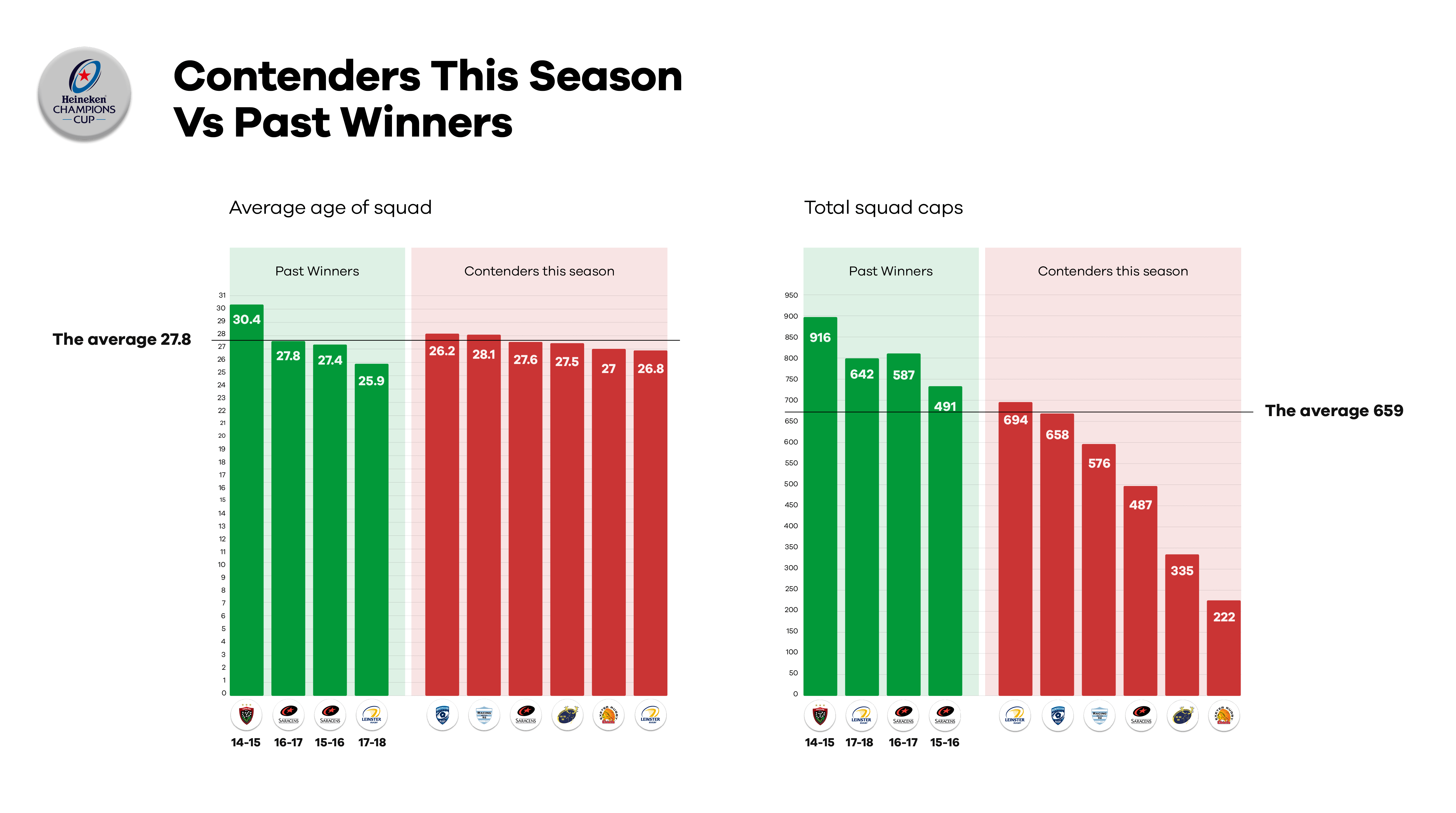

The average age, capped players, number of Test caps and academy players of the past four winning sides have been added up to see which of Leinster, Munster, Saracens, Exeter Chiefs, Montpellier and Racing 92 – by picking their best possible teams of 23 players – come closest to matching the criteria to win the Champions Cup.
Toulon and Leinster’s respective triumphs in 2014-2015 and 2017-2018 could not be more different, with the three-time champions’ blend of world class Test veterans boasting over 900 caps representing an enormous contrast to Leinster’s homegrown success in Bilbao this year, when their match-day 23 contained 20 academy products.
Also, Saracens’ number of Test caps between their two titles notably increased.

Focusing on this season and the six teams from our potential winners shortlist, Saracens come closest to the average age of the past four champions’ squads, only 0.2 off the 27.8 years mark, with the youngest team being the defending champions Leinster.
The two French contenders, Montpellier and Racing, supply the oldest groups.
Montpellier fall just one short of the suggested number of Test caps required, 659, a category Leinster lead comfortably with 694. Exeter’s tally of 222 at an average of just under 10 caps per player is startlingly low.
The past four champions combined have featured 19.5 international players and Racing (22) sit well above that mark, with Leinster and Saracens more or less on the money.
Exeter again come up short, with only 13 of their players capped at Test level.
Leinster’s outstanding academy production line admittedly lifted the number of average homegrown players from 2015-2018 up significantly to a mark of 9.3, given that Toulon and Saracens in the previous three years selected a combined 17 academy products compared to Leinster’s 20 in a single final.
Adding James Lowe and Joe Tomane into this year’s side would drop that academy players number to a still impressive 18, and based on the data of the last four years, despite their young average age, Leinster are comfortably in the best position when it comes to Test players, number of Test caps and homegrown talent to win a second straight European crown.